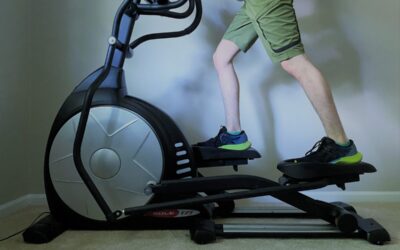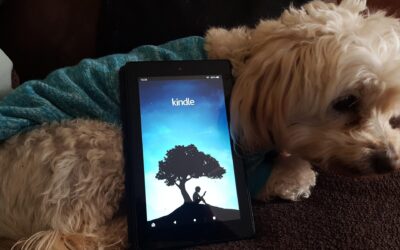Since I first got eyeglasses more than a dozen years ago, I had regular eye exams–if not every year, then at least every other one. But today was the first time I experienced the portion of the eye exam involving pupil dilation.
Pupil dilation is one method eye doctors use to check for signs of glaucoma–an eye disease that can cause damage to the eye and can lead to blindness, if left untreated.
What the Eye Doctor’s Office Told Me Before the Exam
When I set up the appointment, the associate at the doctor’s office recommended that I arrange to have someone drive me home after the test. The reason I was given: that the dilation of the eyes makes them super-sensitive to light–plus, it can make it difficult for your eyes to focus for several hours after the exam.
How the Test Was Done
Before the doctor performed the pupil dilation, one of his associates performed a test commonly known as the “air puff” test. For this test, the patient sits on a stool and rests their head on a plastic headrest with an indentation for the chin. Asked to hold very still, the patient is supposed to look straight ahead at a light. A tiny puff of air is then shot at the surface of the patient’s eyeball. This is often jarring–but in my experience, not actually painful. (For the record: the worst part about this “air puff” test seems to be the anticipation of the air hitting your eye–and of trying to keep from blinking.) The test is supposed to measure the pressure inside the eyeball–and a too-high reading can indicate that a person is more likely to suffer from glaucoma.
On this occasion, the associate actually had to perform the “puff test” three times–and each time, the result was different. Part of the problem may have been that my eyes would start to blink just as the reading was being taken–though I can’t be sure of that.
Because of the difficulty with getting a consistent pressure reading, the doctor opted to perform what he said would be a more definitive test. First, he put some yellowish drops into my eyes–drops which made my eyes feel sticky. The doctor then had me close my eyes for about a minute. Then, with my head resting on another plastic harness, he held my eyes open, one at a time, then gently touched each eyeball a sensor attached to a bright blue light. (I didn’t know at the time that the doctor was actually touching my eyes with anything–nor did I realize that the drops were actually numbing drops so that I wouldn’t feel the sensors on my eyeball. But I can honestly say, those drops really did their job.)
The Pupil Dilation
The doctor put more drops in my eyes. (These weren’t sticky like the numbing ones he gave me before.) The doctor then had me sit in the lobby so the drops could take effect. Having been advised by a friend that it would make for an easier transition, I closed my eyes while waiting for the drops to do their thing. After several minutes, I noticed that the light coming in through my eyelids was much more intense than I was used to–a sign that my pupils were no longer filtering light as normal.
A minute or so later, I was called back to a darkened room where I once again rested my chin in a contraption. Then, I was asked to look into a tiny light. For an instant, that light expanded into what appeared to be a large moon right in front of my eye–then a brilliant flash went off. The same procedure was performed on my second eye. What had just been done: a digital photo had been taken of the inside of each of my eyes.
After sitting in the lobby for another five more minutes, the doctor called me back again and performed another examination. Resting my chin on the contraption again, I followed the doctor’s requests as he instructed me to look up and to the right, straight up, up and to the left, down and to the left, straight down, down and to the right–then all repeated while he looked into my other eye.
Using the digital photos, as well as the manual exam, the doctor analyzed the health of my eyes and their parts and to diagnose for any signs of glaucoma.
The Aftermath — Recovering from Pupil Dilation
I’d been told that recovering from a pupil dilation test often takes from three to six hours, but that up to 24 hours is not unheard of and is still considered normal. For me, it took six hours before my eyes dropped out of their fully dilated state–and then, my left eye remained dilated longer than the right. Only after eight and a half hours had passed were my eyes completely back to normal.
But the hours spent recovering from the dilation were not comfortable. I was able to sit inside the doctor’s office without additional eye protection, but once I walked outside, I was blinded by the light even though it was a cloudy day. So I donned the cardboard sunglasses for the ride home. (My eye doctor had said that nearly everyone can drive during their recovery–I, however, could tell that my eyes were not focusing normally, so was glad that I had arranged to have a ride home. And I would strongly advise the same for anyone having the pupil dilation test done.)
Once home, I spent the next several hours performing small chores–cleaning my son’s room, doing the dishes, etc–with most of the house lights off. Even with this precaution, I had to lay down periodically and close my eyes for several minutes to give my eyes a break from the light. One additional problem–I felt slightly woosey, as though I had a head cold, or perhaps only a couple of hours of sleep. All of these problems vanished when my my eyes recovered from the dilation. But in the meantime, I wasn’t operating at full capacity, and I felt definitely out-of-sorts. I was glad that I had planned for the worst, arranging for a ride home after my visit to the eye doctor and not making any big plans for the remainder of the evening.
Until I learned that I needed glasses, I had never known that it’s recommended that everyone–whether they think they need glasses, or not–get their eyes checked out every so often, just for general health reasons. One important reason being that eye diseases like glaucoma may not have any noticeable symptoms–but that doesn’t mean they won’t do significant damage, perhaps even causing blindness.
Disclaimer:
In relating my experience here, I don’t pretend to be a doctor–so you shouldn’t take any of what I’ve said as medical advice of any kind. (Only a medical doctor can give medical advice.) Always consult with your doctor with any questions about your specific condition.




0 Comments